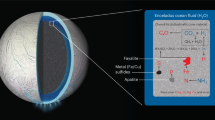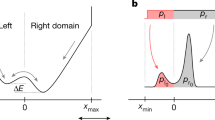Abstract
IN the recently published volume of “Roger Bacon Commemoration Essays” (1) Prof. Pierre Duhem's contribution, “Roger Bacon et l'Horreur du Vide,” has for its main thesis that Bacon was the first to formulate a theory of universal continuity; an incorrect hypothesis, it is true, but one which Prof. Duhem believes to have served the useful purpose of supplementing “the peripatetic theory of heavy and light” until the discovery of atmospheric pressure. This theory developed in connection with certain problematical phenomena of which this “experiment” is the chief and typical case. If there is suspended in air a vessel of water having a hole in the top and several narrow apertures in the bottom, no water will fall from it so long as the superior aperture is closed. Yet water is heavier than air, and according to the principle of Aristotle's physics should fall to the ground. Writers before Bacon, according to Duhem, explain this anomaly by saying that the fall of the water would produce a vacuum, and that a vacuum cannot exist in nature. But Bacon argues that a vacuum cannot be the reason why the water does not fall, because a vacuum does not exist; he then explains further that although by their particular natures water tends downwards and air upwards, by their nature as parts of the universe they tend to remain in continuity. Duhem holds that Bacon was the first to substitute this positive law of universal continuity for the mere negation that a vacuum cannot exist in nature (2).
This is a preview of subscription content, access via your institution
Access options
Subscribe to this journal
Receive 51 print issues and online access
$199.00 per year
only $3.90 per issue
Buy this article
- Purchase on Springer Link
- Instant access to full article PDF
Prices may be subject to local taxes which are calculated during checkout
Similar content being viewed by others
Author information
Authors and Affiliations
Rights and permissions
About this article
Cite this article
THORNDIKE, L. Adelard of Bath and the Continuity of Universal Nature. Nature 94, 616–617 (1915). https://doi.org/10.1038/094616b0
Issue Date:
DOI: https://doi.org/10.1038/094616b0
Comments
By submitting a comment you agree to abide by our Terms and Community Guidelines. If you find something abusive or that does not comply with our terms or guidelines please flag it as inappropriate.



